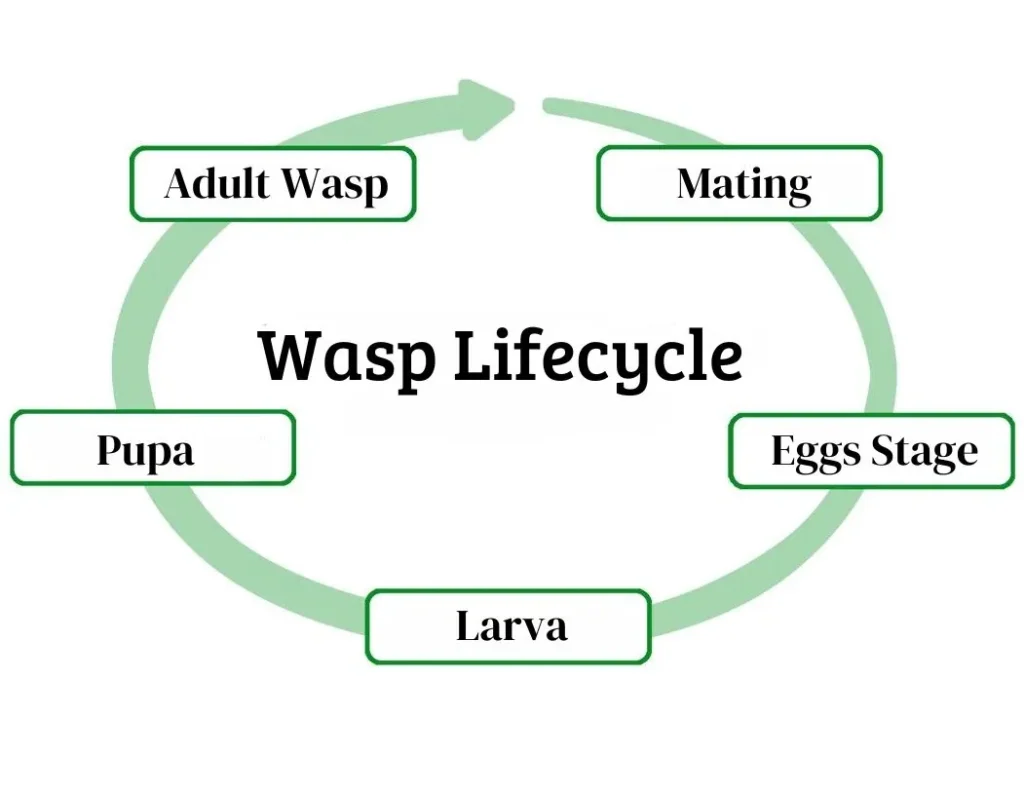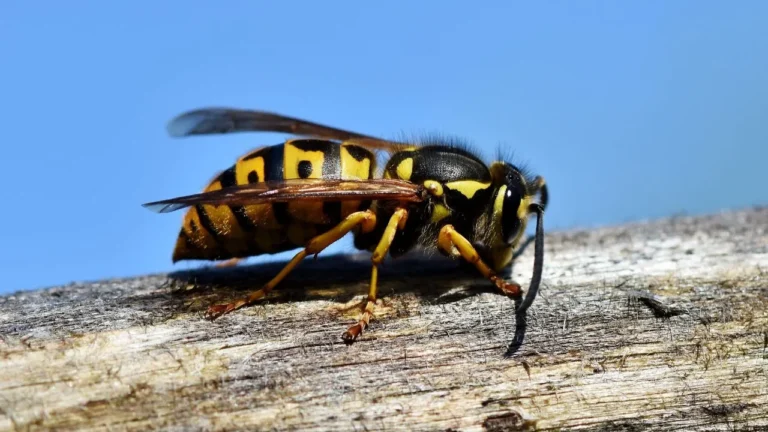How Long Do Wasps Live? Factors Which Affect Wasp Lifespan
Wasps are tiny creatures with an exciting role in the ecosystem. They have elongated bodies with narrow waists having bright yellow and black colors. Many people ask, “How Long Do Wasps Live?” There are 3 types of wasps in a colony: Queen, worker and drone, and they all have different lifespans.
There are multiple factors that have a direct effect on the wasp’s lifespan. In wasp colonies, the worker wasps have a lifespan of 12 to 22 days, while their queen has a life of up to 12 months. Male wasps have the shortest lifespan and often die after mating with the queen. Let’s talk about the wasps and their life cycle; it will help you better manage interaction with them.
Colonies of Wasps
In a colony, there are 3 types of wasps, and their lifespan varies from each other. These are
Queen Wasps
A queen is the longest-living member of the wasp colony. All the male wasps mate with the queen and lay eggs. Other female wasps can’t lay eggs because the queen releases a pheromone which blocks the reproductive development in worker female wasps. The queen lives for up to 12 months, and after her death, the female wasps start developing ovaries. Queens’ life depends on the weather conditions and predators’ attacks.
Workers Wasps
Worker wasps are sterile females. Their responsibility in the colony is to feed the larvae, build the nest and protect it from predators. They have a shorter lifespan of 12-24 days and die within a few weeks of the active summer. The shorter lifespan of worker wasps is because of overburden and predator attacks.
Drone Wasps
Drones are the male wasps, and their only responsibility in the colony is to mate with the queen. They often die within a few hours after mating. They have the shortest lifespan in the colony.
Key Takeaways
“How Long Do Wasps Live?” Here is what we have discussed in this article.

Life Cycle of Wasps
The life cycle of wasps is divided into several stages, and each stage varies according to the conditions. Understanding these stages helps you to provide better environmental conditions for wasps.
Egg Stage
It is the initial stage in which the queen lays eggs inside the cells. These cells are specially designed in the nest by the worker wasps. Egg laying season is spring, and these eggs hatch in a few days.
Larva
After the hatching of eggs, the larval stage starts. The worker bees feed the larvae and it develops into the pupa within 2-3 weeks. It is a crucial stage as the larvae require a lot of nutrients to convert themselves into the pupa.
Pupa
The fully developed larvae spin the silk cocoon and enter the pupa stage. This stage ends in a few weeks. Environmental conditions have a substantial impact on this metamorphosis.
Adult
After completing the pupa stage, they develop into adult wasps. These adult wasps now take responsibility within the colony according to their gender. The lifespan of adult wasps depends on the factors they attracted to. These are environmental factors, food sources and their responsibilities as described above.
What Factors Affect The Lifespan of Wasps?
Multiple factors directly or indirectly affect the lifespan and life cycle of wasps.
Environmental Conditions
The environment has a significant effect on the life of wasps. They live longer in warmer climates, and in winter, they mostly remain hibernated. In the summer, they go outside to collect food and raise their young.
In temperate areas, all members of the colony die in winter except the queen. Who starts the new colony in the spring season?
Predators and Parasites
Wasps face a severe threat from predators, including birds, some insects and spiders. They only attack wasp colonies and kill them or eat their eggs. Moreover, wasps are more exposed to parasites which kill them. The parasite and predator attack reduce the life of wasps.
Human Intervision
Humans, for their safety, use some pest control techniques, resulting in wasps’ death. These pest management activities drastically reduce the population of wasps.
Colony Size and Health
Colony size and health play a vital role in the lives of wasps. If a colony is more extensive, there’s always a food shortage, and conditions are not good. In this condition, wasps’ lives are shorter. If the colony is under stress and dealing with different diseases, then there is a shorter life span for wasps, including the queen.
How Long Can A Wasp Live Without Food?
The life of a wasp without food depends on their activities. If a wasp is working less, then their body requires less energy. In this scenario, worker wasps survive for 2-3 weeks if the work is more than they only survive 1-2 days without food.
In the case of the queen, she survives longer than worker wasps. However, in hibernation season, they live longer without food. Male wasps (Drones) survive for only 1-2 days without food.
How long can a wasp live indoors?
If a wasp is trapped inside without food, water and favorable environmental conditions, it cannot survive more than a few days. But it depends on the wasp type. If a worker wasp or drone is trapped inside, it can survive only 1-2 days. But if a queen is trapped in a door, she can survive longer, up to a few months.
Conclusion
The lifespan of wasps varies according to their gender, role and environmental conditions. Hopefully you understand “How Long Do Wasps Live?” Usually, a queen wasp lives up to one year, a female wasp (Worker) lives 12-22 days, and a male wasp (Drone) dies after mating with the queen. Multiple factors affect the lifespan of wasps, including environmental conditions, food, predators and human intervention.




